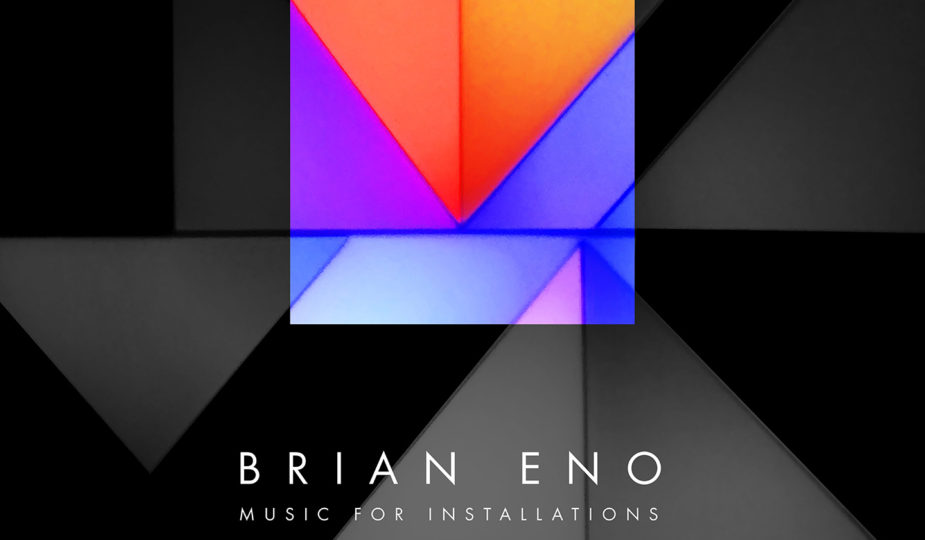
Heaven on Earth: Brian Eno’s Music For Installations (2018)
15 months into the pandemic, and life feels like the ending of the Sleeping Beauty fairytale: a heavy veil is slowly lifting and awakening us from a sleep which for many was filled with endless nightmares of multiple kinds. But while the sleeping beauty’s gentle awakening was entwined with roses and initiated by a Prince’s kiss, our emersion is accompanied by the indissoluble cacophony and unmanageable absurdity of the third modernity. Nowhere is this better to be observed than in Europe.
Millions of people lost their lives and loved ones, jobs, existences, hopes, and sanity during the pandemic. In addition, minds got fucked by trauma or fear, society’s dysfunctionality and the terrible decisions being made for us, or the conspiracy lunacies which were promoted by a sensational mainstream media as their new gossip honey-pot for the full duration of the pandemic. It is too much, impossible to enumerate all the aspects and building blocks of this collective trauma, as each new reality is overtaken in the very next moment by a new perspective, new resolutions, new phenomenons. And so the forced deceleration of life is counteracted by an immense acceleration of the daily narrative, which makes the processing of what was experienced sheer impossible.
Now the citizens of Europe are awakening to the worst and most humiliating kind of nightmare: panem et circenses. The ‘bread and circuses’ phrase refers to the strategy of Roman emperors to keep their citizenry submissive and in their place by diversion and distraction via the distribution of basic food and lots of spectacles & entertainment. The circus thrown at us today is the European football cup, surreally titled ‘Euro 2020’ in 2021- it’s like the last year took place in the twilight zone, or didn’t happen at all. And so the public discourse no longer revolves around viruses, vaccinations, lockdowns, civil rights or traumatizing global political events such as imperial wars or a televised Israeli apartheid, but rather the jersey colors and ball pass quotes of the teams participating in what is a patriotic country competition. We are so cheap.
And while our children are living under ongoing mask mandates and social distancing rules, we see 68000 maskless, topless football fans cheering and beer-chanting in Europe’s biggest stadiums. There might be no lions ripping apart gladiators in a blood-soaked Coliseum in 2021, but what’s happening is no less brutal and equally bulldozing over every gentle soul and nuanced mind which is distanced from triviality and instead seeking to process the now and locate our condition in all its complexity. It is a good time to realize that these processes will not take place in the public or the slippery surfaces of hyperreal societies that lack the art of recapitulation, but only in introspectives enhanced by supreme artists and their works. One such artist is Brian Eno, also known as God, and his Music for Installations is for me the definitive collection of music to navigate you through the many transformations of the plague, and more.
Music for Installations is a collection of music Brian Eno has composed for numerous art installations since 1985. I came back to the 9-LP release after having a strange but forceful moment where I perceived bare human faces as obscene after months of them being covered by masks. No fear, panic, joy or righteousness was attached to this sentiment- it just was. It is one of these thoughts that you don’t let out because it would stop other interesting thoughts from unfolding and spreading like paint blown through a straw, and because you do not want to contribute to a cacophony of individual sentiments (a strategy which in the end might be the ultimate characteristic of ambient music). And looking back, it seems almost inevitable to have craved for Eno after experiencing this moment, since Eno’s music moves in that delicious inch between waking and sleeping, in that space “before and after science”, in that stimulating field that Rumi described as “Out beyond the ideas of right and wrong, there is a field. I will meet you there. It’s the world full of things to talk about.”
Eno’s solo music lacks any sentimental cloak. It doesn’t invade your emotions, which makes it especially pure and precious. This treat is also one of Eno’s major alchemistic contributions to Bowie’s Berlin trilogy. And despite all its experimental surprises, the sounds on Music for Installations flow in the enigmatic basic rhythm of all things. Light and wisdom are built into the tracks and integrated into an architecture based on a hidden Fibonacci pattern. Eno is navigating through infinite installations of landscapes and mindscapes with always a hint of eternity, the eternal present. Installations of light… installations of reality… installations of philosophy, of science… installations of fountains and streams… installations of slow motion massacre.
In the booklet to Music for Installations, Eno talks about his set of pieces called ‘Complex Heaven ‘: “Imagine ‘Heaven’ as a complex, nuanced place… not harps and angels and pious smiles, but a place whose beauty was in its intricate complexity. Like the Earth, in fact, which is the only Heaven I believe in. I want a complex Heaven. I want a lot going on there. I want a lot to look at and listen to and think about. And I want bitter as well as sweet.” This his vision of heaven and its localization on Earth makes for the perfect definition of Eno’s art and legacy: complex, nuanced, paradisiac. A fortress against the profane and trivial. A refuge from panem et circenses. A glacial monolith that emits the light before and after Newton. An ongoing melody that contains every note in the world.
Brian Eno has created heaven on earth.
by Saliha Enzenauer
